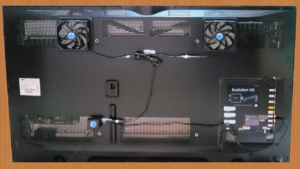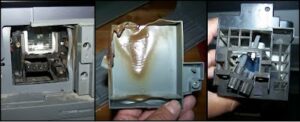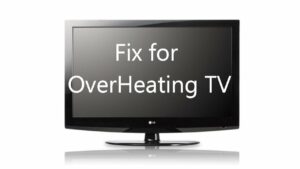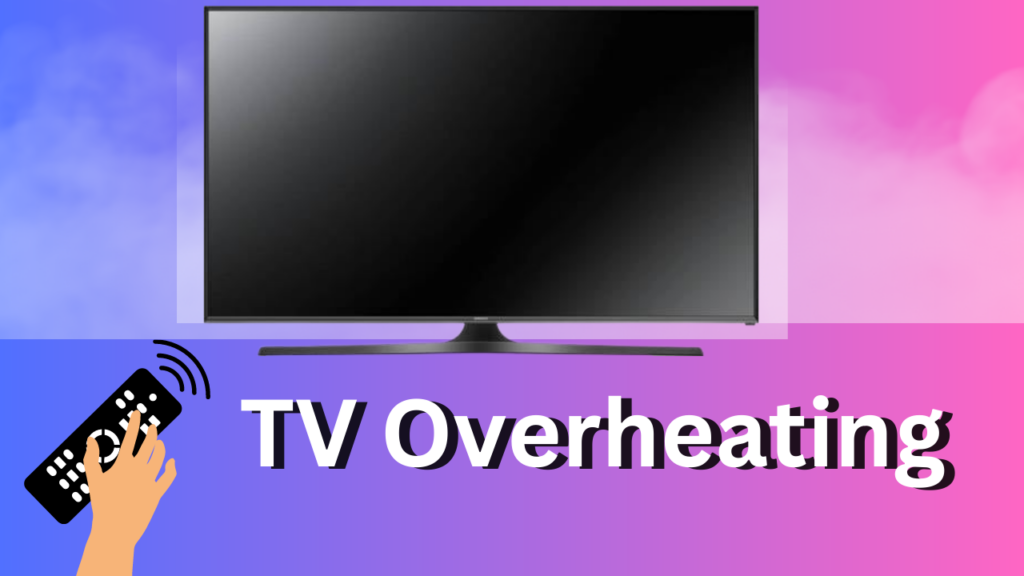Televisions have become a fundamental aspect of our daily routines, serving various purposes such as providing entertainment, education, and communication. However, like any other electronic device, TVs are prone to overheating, which can lead to serious problems. In this article, we will discuss the causes, solutions, and prevention of TV overheating. If your smart TV not connecting to the internet could be due to TV overheating, as excess heat can damage the TV’s internal components and disrupt its connectivity. It’s important to ensure proper ventilation and cooling for your TV to avoid issues like this.
Causes of TV Overheating

Dust Accumulation: Accumulated dust on the TV’s surface or inside the TV can cause overheating. Dust accumulation restricts the airflow around the TV, causing it to overheat.
Clogged Ventilation: If the ventilation holes on your TV are clogged with dust, it can cause the TV to overheat. These holes are designed to allow air to flow in and out of the TV to keep it cool.
Poor Location: The location of the TV is also an important factor. If the TV is placed in a closed cabinet or an enclosed space, it will not receive adequate ventilation, leading to overheating.
Surrounding Temperature: The surrounding temperature can also cause TV overheating. If the temperature of the room is too high, it will cause the TV to overheat.
Aging TV: An aging TV can also lead to overheating. As the TV gets older, its components start to wear out, which can cause the TV to overheat.
Signs of TV Overheating
Discoloration: Overheating can cause the TV’s color to fade or change. If you notice a change in your TV’s color, it may be a sign of overheating.
Noisy Fan: If the TV fan is making a loud noise, it may be a sign of overheating. The fan is designed to keep the TV cool, so if it is working harder than usual, it may be a sign of overheating.
TV Shuts Off Randomly: If your TV shuts off randomly, it may be a sign of overheating. When the TV overheats, it may shut off to prevent damage to the internal components.
Flickering Screen: An overheating TV may also cause the screen to flicker. If you notice that your TV’s screen is flickering, it may be a sign of overheating.
Potential Damage of TV Overheating

Reduced Lifespan of TV: Overheating can significantly reduce the lifespan of your TV. The internal components of the TV can get damaged due to overheating, leading to permanent damage.
Damage to Internal Components: Overheating can cause damage to the internal components of the TV, leading to costly repairs or replacement.
Risk of Fire: Overheating can also pose a risk of fire. If the TV’s internal components get too hot, they can catch fire, which can be dangerous.
Reduced Picture and Sound Quality: Overheating can also cause a reduction in the picture and sound quality. If your TV overheats, you may notice a decrease in the picture and sound quality.
Also Read: Understanding the World of Sports Betting
Preventive Measures
Proper Location of TV: Ensure that the TV is placed in a location that allows for adequate ventilation. Avoid placing the TV in a closed cabinet or enclosed space.
Cleaning TV and Surrounding Area: Regular cleaning of the TV and its surrounding area can help prevent overheating. Use a microfiber cloth to clean the TV and vacuum the area around it to remove dust.
Maintenance of Ventilation: Ensure that the ventilation holes on the TV are clear of dust and debris to allow for adequate airflow.
Room Temperature Regulation: Maintain a room temperature of around 68-72°F to prevent overheating of the TV.
Regular TV Servicing: Regular servicing of the TV by a professional can help prevent overheating. They can clean the TV’s internal components and ensure that they are working correctly.
Solutions for TV Overheating

Cooling Fans: Cooling fans can be used to prevent TV overheating. These fans can be attached to the TV’s ventilation holes to improve airflow and keep the TV cool.
External Coolers: External coolers can also be used to prevent TV overheating. These coolers are placed underneath the TV and help to cool it down.
Power Management: TVs come with power management settings that can help prevent overheating. These settings include sleep mode, auto power off, and energy-saving mode. By using these settings, you can reduce the TV’s energy consumption and prevent overheating.
Replacement of Internal Components: If the TV’s internal components are damaged due to overheating, they may need to be replaced. This can be done by a professional repair technician.
Summary
TV overheating is a common problem that can lead to serious damage to the TV’s internal components and pose a risk of fire. The causes of TV overheating include dust accumulation, clogged ventilation, poor location, surrounding temperature, and aging TV. Signs of TV overheating include discoloration, a noisy fan, a TV shuts off randomly, and a flickering screen. Even if you want to connect your Steam Deck to your TV, make sure to check if your TV is prone to overheating, as prolonged use of the device may cause it to overheat and damage both your TV and the Steam Deck. Preventive measures include the proper location of the TV, cleaning the TV and surrounding area, maintenance of ventilation, room temperature regulation, and regular TV servicing. Solutions for TV overheating include cooling fans, external coolers, power management, and replacement of internal components.
Frequently Asked Questions (FAQs)
Q: Can a TV overheat cause a fire?
A: Yes, if the TV’s internal components get too hot, they can catch fire, which can be dangerous.
Q.How often should I service my TV?
A: It is recommended to service your TV at least once a year with a professional technician to ensure that it is working correctly and prevent overheating.
Q: Can external coolers be used with any type of TV?
A: External coolers can be used with most types of TVs, but it is important to ensure that the cooler is compatible with your TV’s size and model.
Q: What should I do if my TV overheats?
A: If your TV overheats, turn it off and unplug it from the power source. Allow it to cool down for at least an hour before turning it back on. If the problem persists, contact a professional technician.
